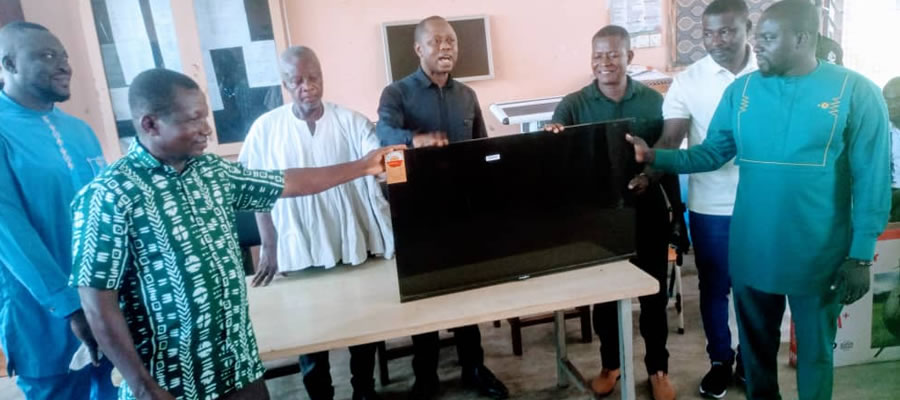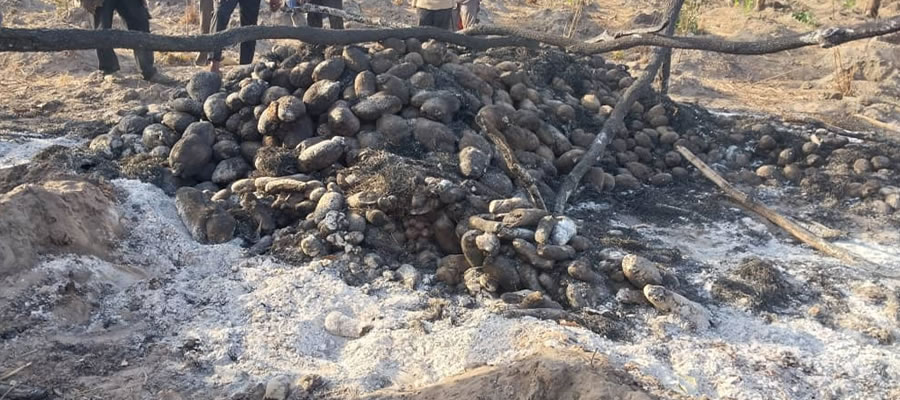

Topology and Drainage
The Municipality lies between the Northern parts of the central Uplands with hills ranging between 850m to 1000m above sea level around Asukawkaw and Katanga areas. The Northern part of the District is part of the North Western Savanna zone of the Volta region which is characterized by almost flat relief with slopes ranging between 85m and 300m above sea level.
The Municipal is drained by the Oti River and the Volta Lake which form the boundary between the District and the Krachi West District. The Asukawkaw River is another major river that drains the District and also marks the end of the District to Jasikan District.
Other water bodies found in the district include numerous intermittent streams located in most parts of the District. These water bodies constitute important resources for the people as most of them depend on them for household use, fishing and transportation. Similarly, the major hills present great potentials for the development of Tourism in the area.
However the topography does not allow for easy road development and most of the communities in the area are accessible only by foot paths through the high terrains. Generally, the area is well drained except that few portions located close to the major rivers and streams become waterlog and pose problems for human and vehicle movement in the rainy seasons. The water bodies also create large expanse of river banks that offer enviable advantage for rice cultivation.
Climate and Vegetation
The mean maximum temperature is 30C usually recorded in March while mean minimum temperature is 25.5C usually recorded in August. The District experiences an alternating wet and dry seasons each year. The rain fall pattern is single maxima towards the northern part of the district with the rains occurring in April to October and double maxima at the south eastern tip. August is usually the peak of the rains.
Mean annual rainfall is 1,300mm. The dry season starts from November to March. Relative humidity is high in the rainy season, about 85% and very low in the dry season (25%) especially during the hamattan period which hits the District from November to December.
This climatic pattern is good for food crop production and to a lower extent, forest development. However, the concentration of the rains in six (6) months affect farming since most parts of the year when rains are off is usually declared as "off farming" and the people spend most of this period idling.
Similarly, the pattern also affect accessibility as most of the community access roads become flooded with water hence making transportation almost impossible during rainy seasons.
The district is located in the transitional zone between the Northern Savannah and the Moist Semi Deciduous forest. About 75% of the District is covered with savannah grass land characterized by short drought resistant trees notable among them are shea, dawadawa, etc. This type of open vegetation is predominant at the northern parts of the district.
Significant portion of forest vegetation could be found in the district especially at the southern part characterized by forest tree species such as Odum, Wawa, mahogany etc. Fringing vegetation can also be found along the major rivers that drain the district.
The vegetation type as described above is gradually being degraded because of overdependence on it for daily livelihood activities such as bush burning, charcoal burning and farming as well as lumbering. As result of these activities the forest trees are being succeeded with savanna trees. This therefore calls for a more concerted effort at preserving the forest cover.
Geology and Soil
The major soils found in the district include the Techiman Association, mainly sandy soil found in the north, Kplesawgu Association (sandy clay soil) in the mid portions and southern tip, and the Dormabin-Dentesso Association (silty sand) found around Dormabin.
It was discovered that no soil management practice is being practiced in the district. This coupled with continuous cultivation resulted to wide spread loss of soil fertility in most parts of the district.
These soil types described above is good for the cultivation of both cash and food crops such as maize, millet, groundnut, as well as roots and tubers such as cassava and yam.
The soils along the river banks support large scale rice farming and those at south eastern tip support cocoa cultivation.
Few patches of clay soil were also discovered around Asukawkaw area and that could be very useful for development of the pottery industry that could serve as an alternative source of livelihood to farmers especially during the dry seasons
Date Created : 11/23/2017 7:46:17 AM











 facebook
facebook
 twitter
twitter
 Youtube
Youtube
 +233 593 831 280
+233 593 831 280 0800 430 430
0800 430 430 GPS: GE-231-4383
GPS: GE-231-4383 info@ghanadistricts.com
info@ghanadistricts.com Box GP1044, Accra, Ghana
Box GP1044, Accra, Ghana